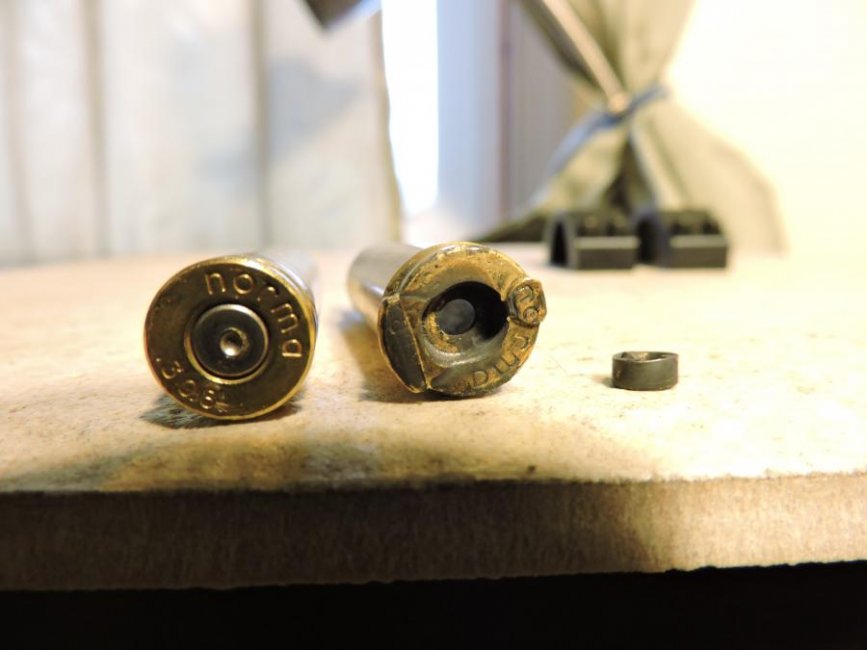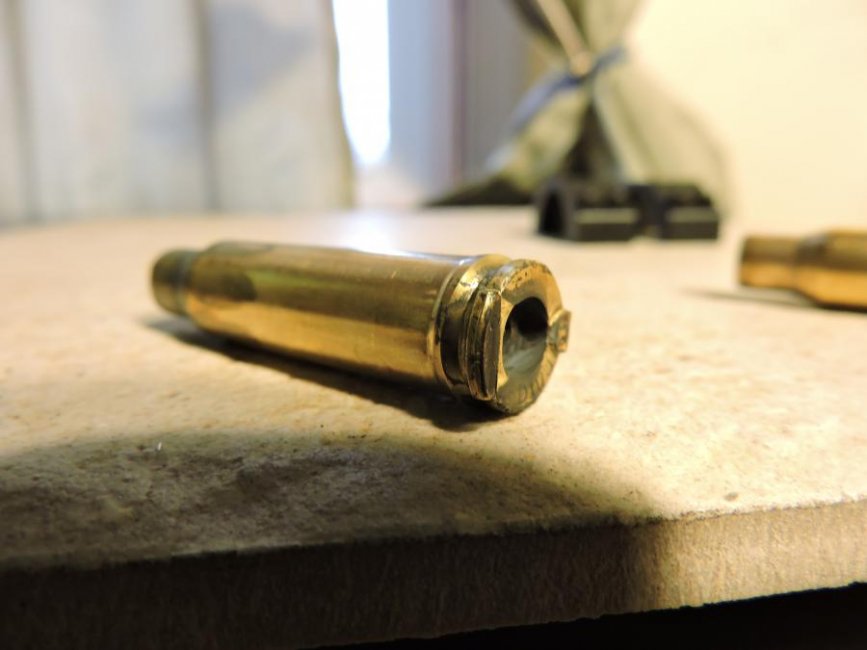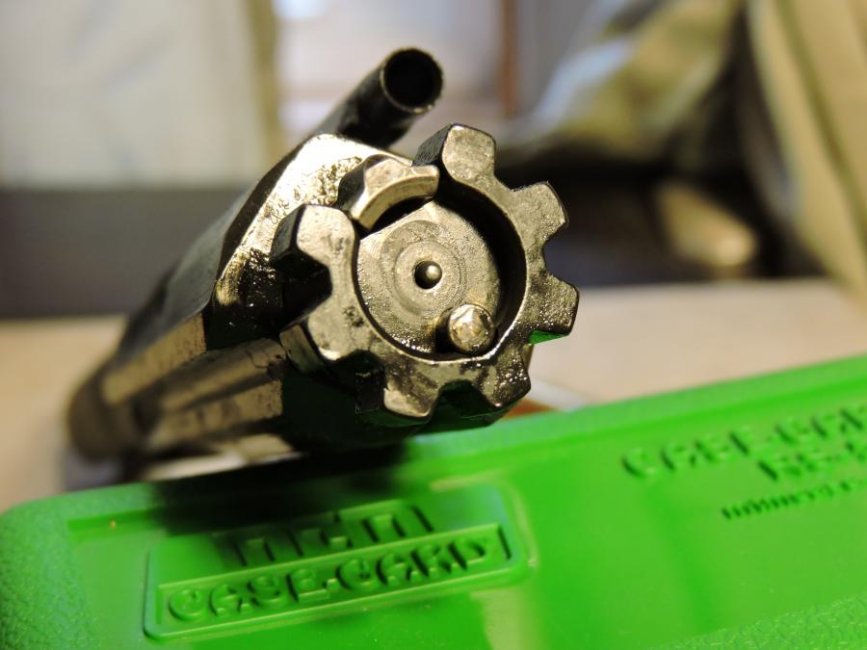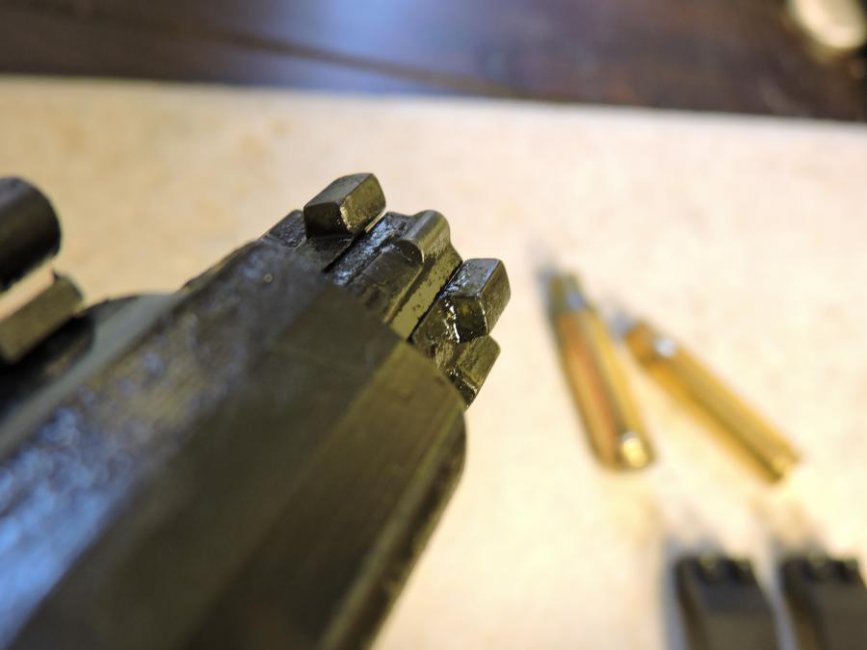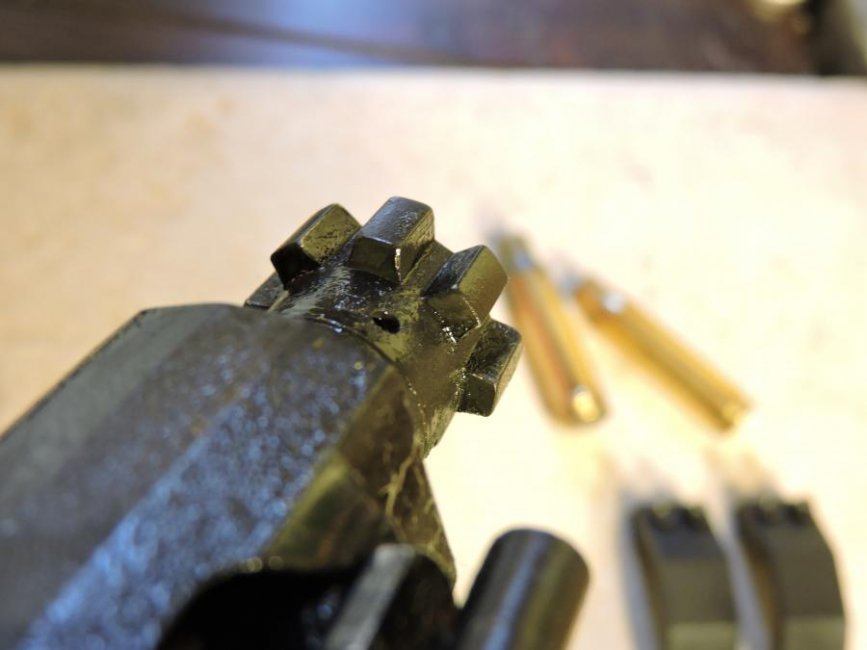After running 15-20 rounds with no issues, the rifle jammed while in battery. I couldn't pull the charging handle back to save my life.
Dropped the lower receiver and could see that the bolt's locking lugs were partially disengaged. I made a half hearted attempt to pry the carrier back but thought better of it. Finally, after a little web searching, I settled on hammering the carrier back by striking it on the ring at the rear with a cold chisel. I had to hit it a number of times, not Arnold Schwarzenegger hammering, but with a fair amount of authority.
Eventually the bolt disengaged and the fired brass fell out, along with the loose primer.
Pictured is the mangled brass and an undamaged piece that was fired in the same round. A cursory visual inspection of the rifle shows no damage, but I haven't disassembled the BCG yet.
What could have caused this?
Dropped the lower receiver and could see that the bolt's locking lugs were partially disengaged. I made a half hearted attempt to pry the carrier back but thought better of it. Finally, after a little web searching, I settled on hammering the carrier back by striking it on the ring at the rear with a cold chisel. I had to hit it a number of times, not Arnold Schwarzenegger hammering, but with a fair amount of authority.
Eventually the bolt disengaged and the fired brass fell out, along with the loose primer.
Pictured is the mangled brass and an undamaged piece that was fired in the same round. A cursory visual inspection of the rifle shows no damage, but I haven't disassembled the BCG yet.
What could have caused this?

